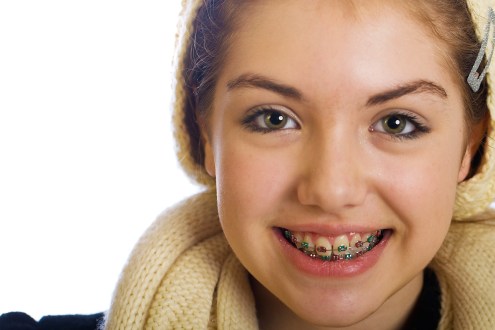KIDS ORTHODONTICS
Orthodonic problems in children can be addressed as early as 5 years. Sometimes early intervention can prevent long orthodonic treatment later on in life. The most important things to look out for are habits that some children might have like thumb sucking. These habits can cause skeletal imbalance and can be treated very effectively early on.
Orthodontic problems in children can be addressed as early as 5 years. Sometimes early intervention can prevent long orthodontic treatment later on in life. The most important things to look out for are habits that some children might have like thumb sucking. These habits can cause skeletal imbalance and can be treated very effectively early on.
INTERCEPTIVE ORTHODONTICS
Definiton: Any procedure that eliminates or reduces the severity of malocclusion in the developing dentition.
All simple measures that eliminate the developing malocclusion.
What is Interceptive Orthodontics?
Interceptive orthodonics is a phased type of orthodontics which is the practice of extracting malocclusions once they are detected in an attempt to avoid adult malocclusion. Tooth growth is used to address developmental occlusion problems. This is done in two situations – by retaining deciduous teeth, and where there is malocclusion in the deciduous teeth and extracting these teeth can allow the patient to correct itself during the growth phase.
Interceptive Orthodontics for Children
Interceptive orthodontics is oHen the first phase. It may not prevent the need for braces, retainers, or other orthodontic treatment in later years but it can minimize the second phase of treatment. Phase two will start when all the permanent teeth have erupted at 12 to 14 years. The second phase will be shorter in duration since there will be minimal corrections to be made. In this phase, skeletal development problems are corrected. Phase two is also sometimes used to correct problems resulting from oral habits, such as thumb sucking and pacifier habits. If these habits persisted aHer the child reaches the age of three, the following are likely to occur:
- A reshaped jawbone given its soH and pliable nature
- Misaligned teeth growing out of position
- Narrower dental arches
- Extreme tongue thrust habits
- Protruding front teeth which may be more susceptible to injury
- “Open bites” that would require extensive corrective orthodontic treatment
- Some developmental issues that will require interceptive orthodontics include:
- Constricted palate causes misalignment of back teeth commonly called cross bite
- Teeth crowding
- uneven development of upper and lower jaw
Advantages of Interceptive Orthodontics
Early orthodontic treatment may prevent serious problems from developing and may make treatment at a later stage shorter and less complicated. Early treatment gives your orthodontist the chance to:
- Guide jaw growth to create facial symmetry
- Lower the risk of trauma to protruded front teeth
- Correct harmful oral habits
- Improve appearance and self-esteem
- Guide permanent teeth into a more favourable position
- Improve the way lips meet
- Create room for crowded, erupting teeth
- Preserving space for un-erupted teeth
- Reducing the need for tooth removal
- Reducing treatment time
Why Your Child Needs Interceptive Orthodontics
Interceptive orthodontics improves malocclusions aside from improving the child’s appearance. Malocclusions occur due to a tooth or jaw misalignment. It affects the way a child chews, smiles, cleans his teeth or even how he feels about his smile. Crowded teeth can make it difficult to brush and floss the teeth. This can later on lead to tooth decay and periodontal disease. Meanwhile, protruding teeth are prone to accidental chipping. Unfavourable growth and uneven tooth wear may result from cross bites while tongue-thrusting habits and speech impediments may result from open bites.
To prevent unwanted incidents from happening and for proper bite and jaw alignment and have your kids’ teeth formation checked during dental visits to ensure proper bone alignment and tooth growth. Removable appliance therapy for children (plates and retainers). Removable appliances can be used to correct mal-occlusions in kids from a very early age. Some of the most common problems that can be treated are prolonged thumb sucking and dummy sucking, as well as other habits effecting the development of the teeth and face. These appliances need be worn for 3-6 months.
The cost of removable appliances is significantly less than fixed braces, and can also prevent long and invasive treatment later in life.
METAL BRACES FOR CHILDREN AND TEENS
These still remain the most popular type of braces and provide a very effective solution to the many orthodontic problems that exist. Relative to their predecessors, the metal fixed appliances are much smaller, thinner and easier to clean. The placement of these fixed appliances is simple, pain free and takes approximately 20 minutes per arch. The braces are usually adjusted every 6 weeks.
There is some discomfort in the days following the initial placement and the subsequent adjustment of these braces, however, most people do not need to take any pain relief. For the small proportion of people who do, it is effectively controlled by mild pain killers e.g. paracetamol or nurofen or whatever you would take for a mild headache. The duration of metal fixed appliances ranges from between 4 to 24 months depending on the complexity of the bite.
CERAMIC BRACES / CLEAR BRACES FOR CHILDREN OR TEENS
These are the second most popular type of braces. Because of their clear-tooth coloured appearance, they are popular with patients who wish to minimize the visual effect of braces. The brackets (the part of the brace that is glued onto each tooth) differ from the metal fixed appliances as these are made from a tooth colour ceramic material.



